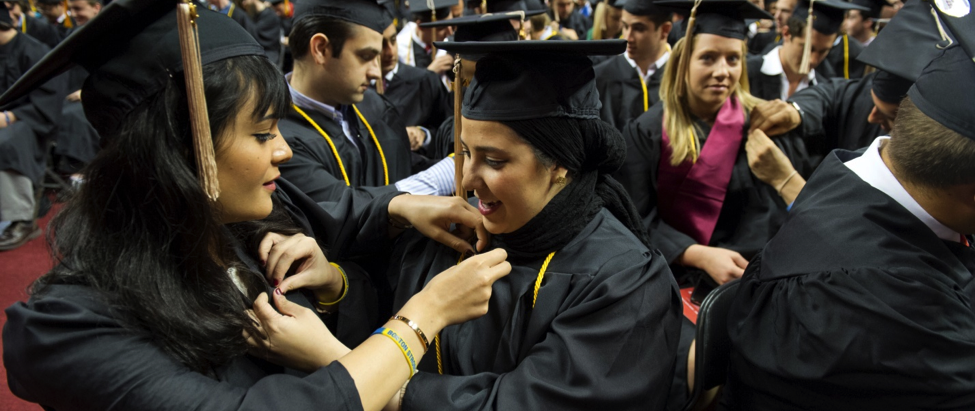Undergraduate Enrollment
During the 1980s Northeastern University enrolled approximately 20,000 full-time undergraduates. Since then it has significantly reduced student population, concomitant with its rise as an internationally known research institution. Since 2009, undergraduate enrollment has fluctuated semester by semester between 14,200 and 15,500, with a freshman class of less than 2,900 students each year during that period; for the 2012-2013 academic year, approximately 2,600 students matriculated.
The University continuously reassesses its level of local undergraduate population: with increasing out-of-area cooperative education placements driven by student demand and the institution’s global reach, a growing demand for online and distance learning, and increased opportunities for study abroad and similar experiential education programs outside Massachusetts.
Graduate Enrollment
Graduate student enrollment, including all full- and part-time students in graduate and law programs, on campus and online, was approximately 11,500 in the 2012-2013 academic year, and is projected to increase by 10% by 2021, as the University’s global reputation for research and knowledge creation rises. The greater part of the increased graduate population is expected to come through online or hybrid learning programs, such as programs through the University’s satellite campuses in Seattle, Washington, Charlotte, N.C., and proposed future locations outside Massachusetts. There will be a rise in the number of doctoral students along with the university’s research reputation and enhanced facilities.
Neighborhood concerns about quality of life issues could be addressed in part by these demographic shifts –a student population more heavily weighted toward graduate students, with expanded on-campus housing, a smaller undergraduate population and additional student housing during the course of the IMP.



